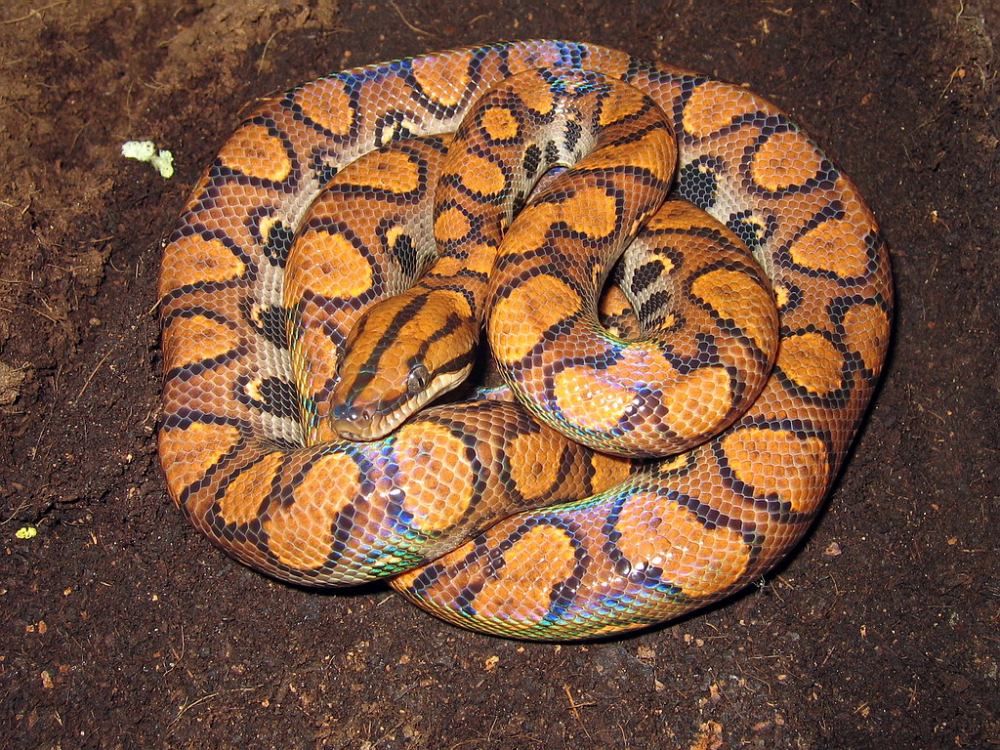Rainbow Boa, belonging to the genus Epicrates, are a group of strikingly beautiful snakes that captivate enthusiasts and herpetologists alike with their radiant iridescence and elusive nature. These serpents, known for their vibrant colors and sleek appearance, are native to the lush rainforests of Central and South America. From their intriguing biology to their significance in the exotic pet trade, exploring the realm of Rainbow Boas unveils a world of wonder and fascination.
The Anatomy and Appearance
Rainbow Boas are renowned for their stunning appearance, characterized by a glossy sheen and iridescent scales that shimmer in a myriad of colors. These colors, ranging from deep reds and oranges to brilliant yellows and blues, give the impression of a rainbow draped along their sleek bodies, hence the name. The iridescence of their scales is due to microscopic ridges on their scales that refract light, creating a mesmerizing effect.
Their bodies are cylindrical, adorned with smooth scales that contribute to their graceful movement. With an average length ranging from four to seven feet, Rainbow Boas are considered medium-sized snakes. Their prehensile tails aid in climbing, allowing them to navigate through the dense foliage of their natural habitat with ease.

Habitat and Distribution
Rainbow Boas primarily inhabit the dense tropical rainforests of Central and South America, including countries such as Brazil, Suriname, Guyana, and Venezuela. Within these habitats, they can be found dwelling near water sources such as streams and rivers, as they are proficient swimmers and may hunt aquatic prey.
Their environment consists of dense vegetation, providing ample hiding spots and opportunities for ambush hunting. These snakes are primarily nocturnal, preferring to hunt and explore under the cover of darkness when temperatures are cooler and prey are more active.
Feeding Habits and Behavior
As ambush predators, Rainbow Boas rely on stealth and patience to capture their prey. Their diet consists primarily of small mammals, birds, amphibians, and occasionally reptiles. Using their powerful constriction, they subdue their prey before swallowing it whole. After feeding, Rainbow Boas may retreat to a secluded location to digest their meal, often remaining hidden for several days.
Despite their vibrant appearance, Rainbow Boa is relatively shy and elusive creature, preferring to avoid confrontation whenever possible. When threatened, they may adopt defensive postures, such as coiling their bodies and hissing, to deter potential predators. However, they are not aggressive by nature and will typically retreat if given the opportunity.
Reproduction and Lifecycle
Like many snakes, Rainbow Boas are ovoviviparous, meaning they give birth to live young. Mating typically occurs during the rainy season when food is abundant, triggering a surge in reproductive activity. Female Rainbow Boas can store sperm for several months, allowing them to delay fertilization until conditions are optimal for offspring survival.
Gestation lasts approximately six to eight months, after which females give birth to a litter of 10 to 20 neonates. These young snakes are independent from birth and must fend for themselves from the moment they emerge. With proper care and ample food sources, Rainbow Boas can live for up to 20 years in captivity, though their lifespan in the wild may be shorter due to predation and environmental factors.
Conservation Status and Threats
Despite their widespread distribution, Rainbow Boas face numerous threats in their natural habitat. Habitat destruction, caused by deforestation and agricultural expansion, poses a significant risk to their survival. Additionally, they are often targeted by poachers for the exotic pet trade, further diminishing wild populations.
Efforts to protect Rainbow Boa and its habitats are crucial for ensuring their long-term survival. Conservation initiatives, such as habitat restoration and captive breeding programs, play a vital role in safeguarding these magnificent snakes for future generations to appreciate and admire.
Conclusion
In the intricate tapestry of the natural world, Rainbow Boas stand out as shining examples of nature’s artistry and resilience. With their kaleidoscopic hues and graceful demeanor, they embody the beauty and mystery of the rainforests they call home. Through education, conservation, and responsible stewardship, we can ensure that these captivating serpents continue to thrive in the wild and enchant us with their mesmerizing presence for generations to come.









